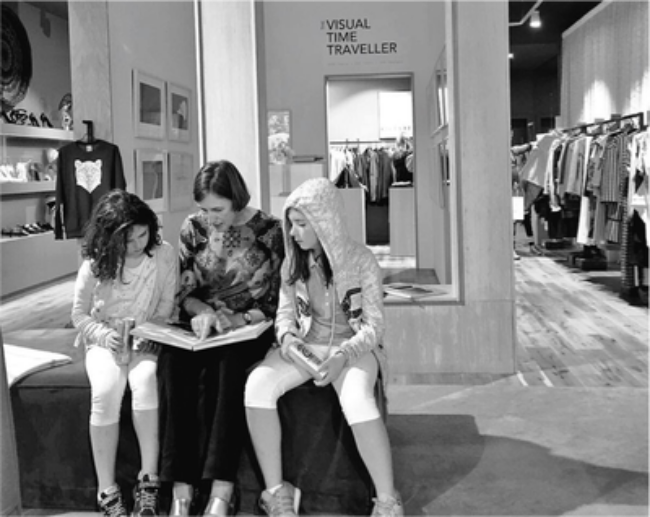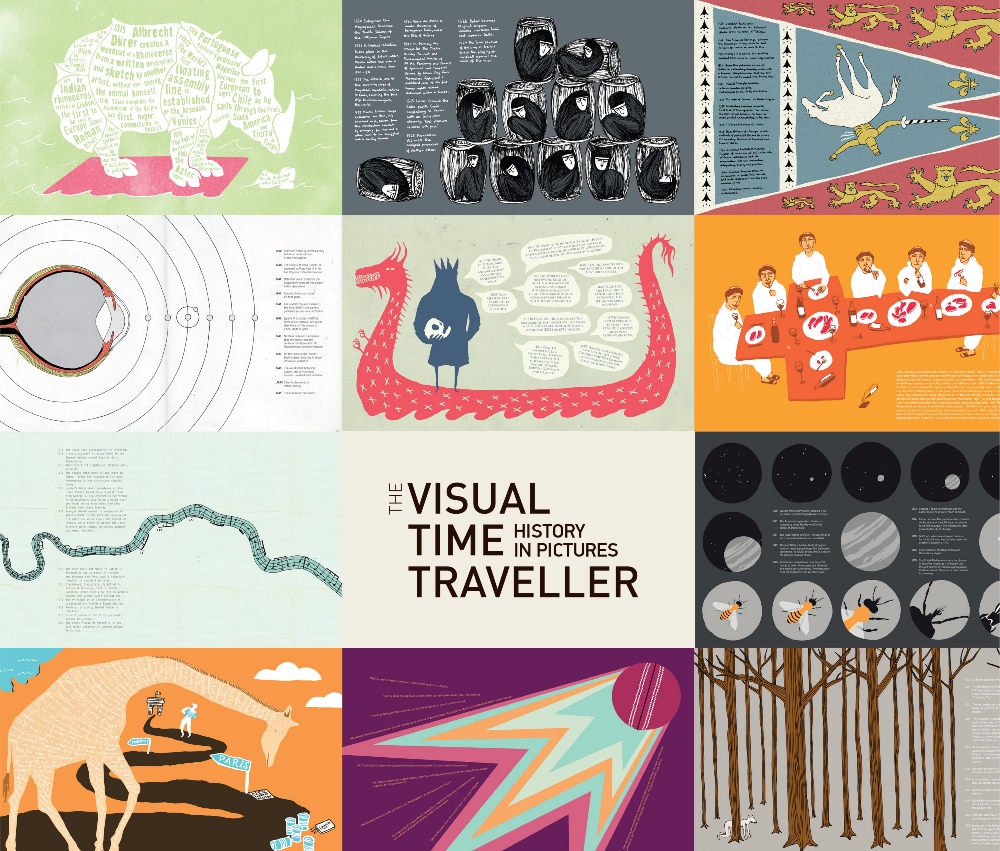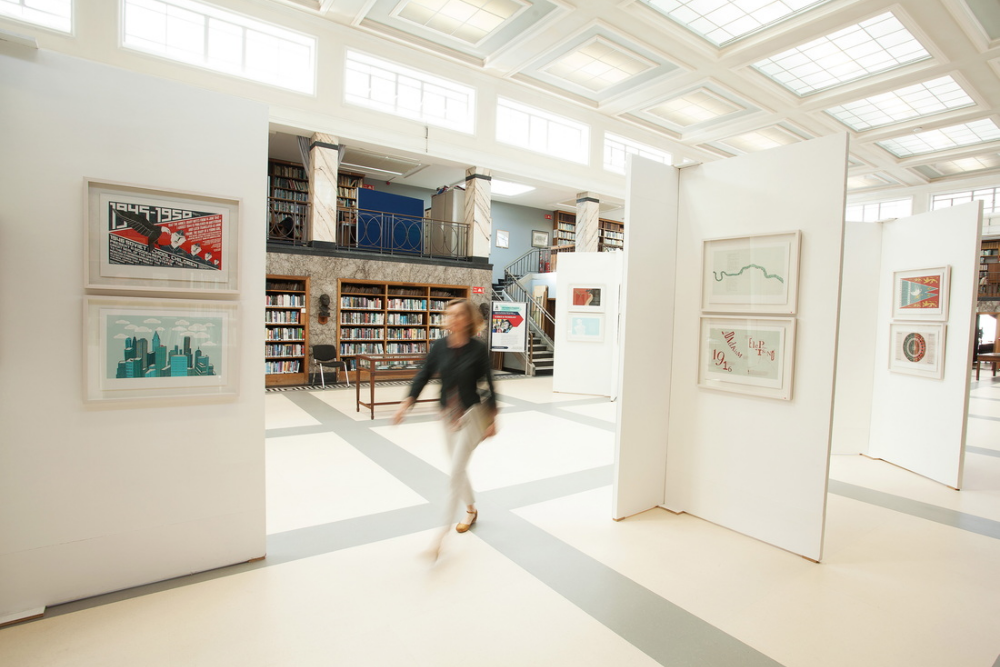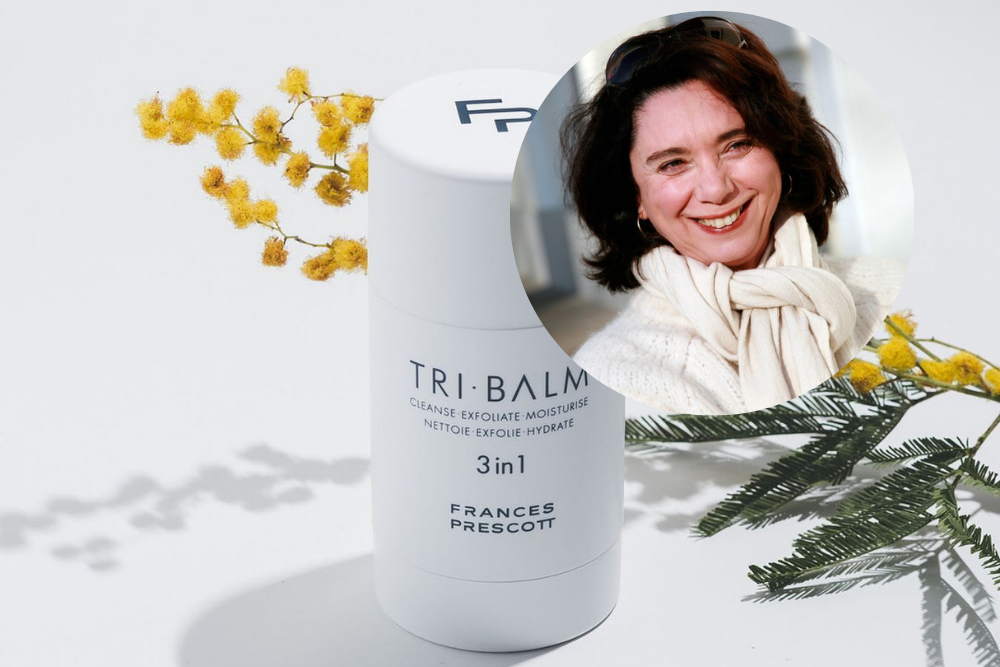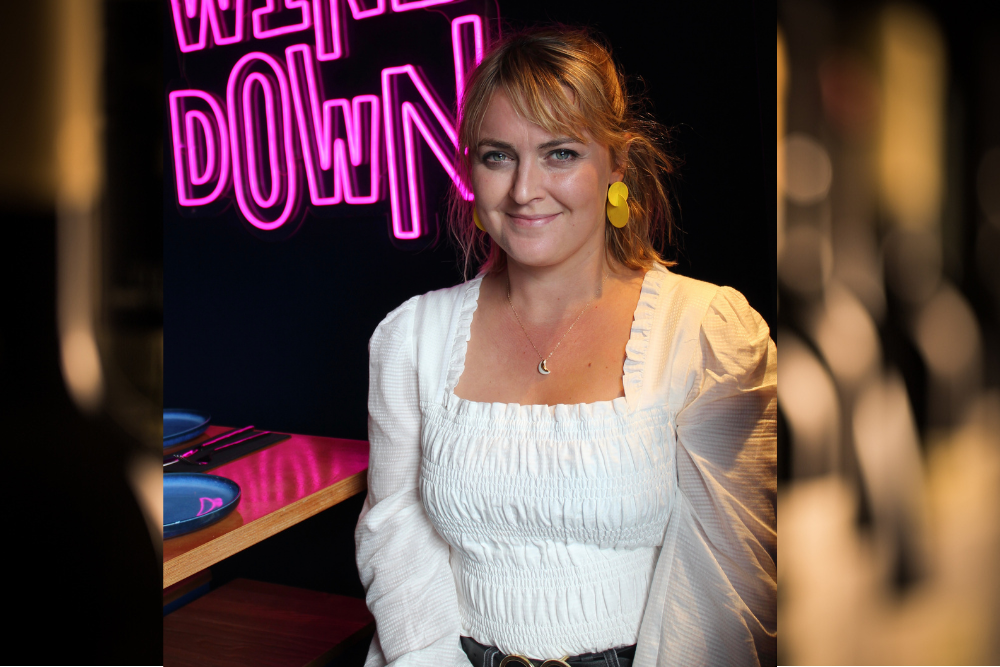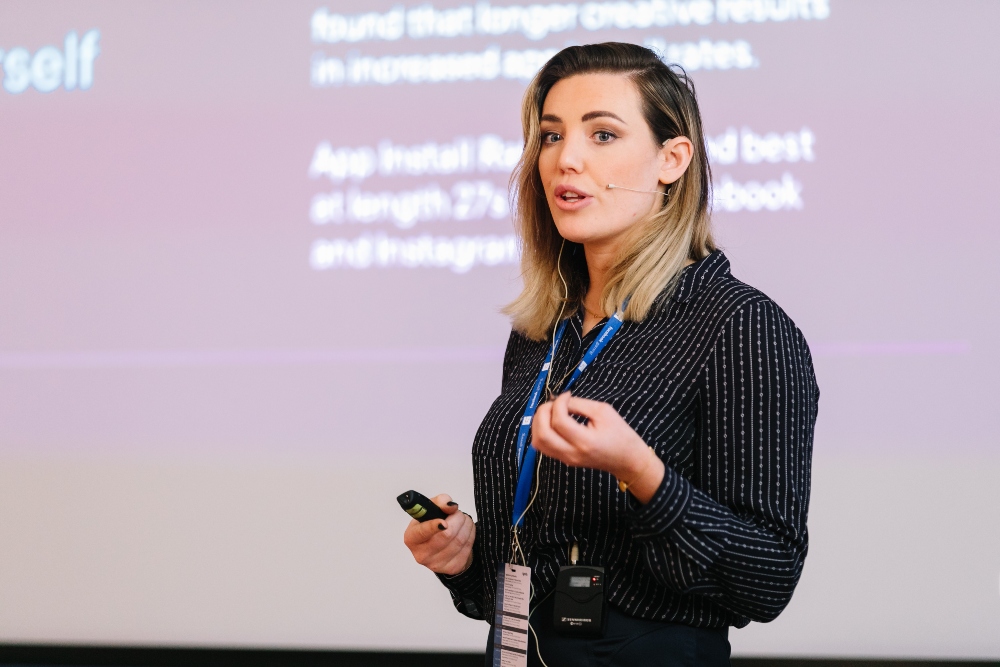Alison Hackett, founder of 21st Century Renaissance, shares her life and business lessons.
Alison Hackett is the founder of publishing company 21st Century Renaissance (21CR). She set up her publishing company in 2012. As an independent publisher, 21CR focuses on contextual history illustration and poetry. Proudly Irish, the firm also places the highest value on the imagination and skills of writers, illustrators and designers in all of whom are based in Ireland.
21st Century Renaissance has just been recognised as Dublin’s Best Independent History Publishing Company in the Irish Enterprise Awards.
In addition to her own works (The Visual Time Traveller especially), she has also edited and published poetry anthologies by two male poets. She lives in Dun Laoghaire, where she and her husband regularly sail.
Tell us about your background, what journey did you take to arrive at where you are?
I was born in Cork but spent most of my years in education in Dublin, and never really left! Graduating from Trinity College in 1983 with a degree in Mathematics and Economics and a teaching diploma, I worked as a teacher in Ireland and the UK and then lived in the US for several years. A career change in 2000 led to me becoming the Irish Representative for the Institute of Physics when I attended the first-of-its-kind Physics on Stage teachers conference in CERN that same year.
“Writing is a form of therapy. As an editor I see myself as drawing the best out of an author, helping them know what they really want to say, and turning that into a commercially viable book”
From this my big idea was born (it was first an educational poster for classrooms) — to explore the complex interaction of human endeavours in a timeline of scientific, social, artistic, historic and political events. This eventually emerged as The Visual Time Traveller, the founding publication of Twenty-First Century Renaissance. A YouTube webinar tells much of that journey when myself and another publisher, Ivan O’Brien, chat about how we go about our business (including a few of our personal publishing nightmares!).
Why are you doing what you are doing? What need are you meeting? What’s your USP?
My USP is my love of visual art, reading, writing and learning. I satisfied all these desires by researching, writing and publishing the art book The Visual Time Traveller which was selected for the Global Irish Design Challenge exhibitions of 2016/2017. As a publisher I buy and sell intellectual property (copyright) in the form of books and the difference is this: Twenty-First Century Renaissance is a publishing platform which signs contracts with writers and illustrators who develop their work under its unique interdisciplinary and editorial oversight. I have a highly collaborative process between editors & authors.
Writing is a form of therapy. As an editor I see myself as drawing the best out of an author, helping them know what they really want to say, and turning that into a commercially viable book. I was thrilled to be recognised for this commitment to quality publishing by EU Business News: “Nothing is as it seems with 21st Century Renaissance. The publishing house produces the wondrous, the beautiful and the compelling and does it all with dignity, professionalism, innovation, and a passion that guides the overall direction of the business.” Best Independent History Publishing Company – Dublin (EU Business News, Irish Enterprise Awards 2022)
How did you fund and start the business and what are your growth plans?
Self-funded to start with. This phase included an intense R&D phase to develop content and realisation of The Visual Time Traveller as a viable product that had a market. I needed to understand how it (and future publications under 21CR) would work within the publishing/edutainment industries.
Growth plans for Twenty-First Century Renaissance:
— to expand operations in buying and selling rights internationally at book fairs (such as London and Frankfurt).
—developing the 21CR brand and platform for international recognition
— regular content for the documentary YouTube channel for The Visual Time Traveller
— new book/exhibition in The Visual Time Traveller series (launch Nov 2023) based around medicine
— a Visual Time Traveller gallery/shop with a retail footprint in spaces like Dublin Airport
— to present a copy of this legacy Irish-imagined visualization of world history since the Renaissance to President Joseph Biden when he visits Ireland.
— to attract funding/investment/merger
What are your key skills and qualities that set you apart?
I’m open minded, committed, honest and interdisciplinary. A horizontal and respectful structure for those I collaborate with: no one is more important than anyone else. The person who cleans the office is as important as the person who writes the books. I always deliver.
“Unusually I am a female editor editing male writers, bringing out their more vulnerable sides, and with the women I publish I want to, with the gentlest of nudges, bring out their political sides”
What distinguishes 21CR from the crowd is the care that will always be taken over editorial content and its curation with a commitment to design the product professionally. The editorial, design and illustration teams creating the books are of the highest calibre.
What (or whom) has helped you most along the way? Who was your greatest mentor/inspiration?
My father. He always believed in me, and was so interested in what I was doing and brought me up like a boy, chopping wood, changing tyres, taking things apart, a life outdoors and on the sea.
“One of the big challenges has been the publishing industry and distribution system wanting us to fit into the usual categories of literary or commercial, and in fact they only want commercial.”
My mum died when I was just 12, and I’ve shared my story of dealing with the delayed grief over her death in a video on our YouTube channel. Her fingerprint in my life was key to the inspiration for The Visual Time Traveller, and that book really brought about 21st Century Renaissance, the publishing house. The Visual Time Traveller is dedicated to my mum who never knew I wrote it; and Crabbing, my first collection of poetry, is dedicated to my dad, who cared for me in her absence and helped me become the person I am. This piece honours them both written in 2017, Am I a writer? RTE’s poem of the day, The Last Two Pots of Marmalade, was written for my dad after he died.
As a child, I remember my mum writing letters to the editors of papers in the 1960s. I started writing my own letters to the papers in my late fifties and published a compendium of them in 2017, Yours etc.
What was the greatest piece of business advice you ever received?
From another publisher: “Slow down. Get the book finished and ready to print (but don’t print yet); start marketing; let the story trickle out over the next few months and then, and only then, when the public is really hungry for it – print and launch.”
What circumstances/qualities/events can mark the difference between success or failure in life or business?
Knowing when to take a risk (and knowing how much risk you can bear); nurturing relationships — don’t fall out — be humble when necessary — admit it when you are wrong – know your what, your why, and your how — these are why you keep going. Courage. Vision. Confidence.
Oh, and, to remember that ‘rejection’ is always an opportunity. My way of turning it around to a positive is to say “we were not a good fit for each other.”
What was the most challenging aspect of either starting or growing the business?
21st Century Renaissance is unique. We have been described as a publishing platform, as we launch our authors differently. Unusually I am a female editor editing male writers, bringing out their more vulnerable sides, and with the women I publish I want to, with the gentlest of nudges, bring out their political sides.
“I am thrilled to be back meeting everyone in person and feeling the joy of friendship and collaboration in and out of business. The feeling of normality is phenomenal. This promises for an exciting year as everyone gets back in the saddle”
However, one of the big challenges has been the publishing industry and distribution system wanting us to fit into the usual categories of literary or commercial, and in fact they only want commercial. But it has meant we’ve needed to work extra hard to help our commercial audience understand where and how we fit in as publishers of innovative literary content.
The challenges I initially faced in finding an audience for this book and exhibition were enormous — at my first Visual Time Traveller talk (in the RDS Library which had mounted the exhibition in the library). I read a short script I had written (The Dialogue: with apologies to Galileo) at the end to air my general frustration as a writer-publisher and the struggle in falling short on a marketing and sales strategy that would have helped get the business off the ground.
How did you navigate your business through the pandemic and what lessons did you learn?
Like every other business, online meetings became a big part of our day. However, the adjustment was not as huge for us as perhaps other businesses had to make as we were already dealing with people and organisations in other countries (for example, media in the USA) and digital communication was par for the course.
The biggest lesson was to be aware of the threat to relationship-building when communication with everyone I worked with was through a screen. To have taken on a new author (Chris Fitzpatrick) and to have managed to develop his work with only a handful of face to face meetings with him and the designer was very demanding. It is so easy for meaning to get lost in translation through the binary coding of a screen display. I am thrilled to be back meeting everyone in person and feeling the joy of friendship and collaboration in and out of business. The feeling of normality is phenomenal. This promises for an exciting year as everyone gets back in the saddle.
Main lesson: the importance of communication and how much more careful one must be when you are not in the same room together.
How has digital transformation been a factor in your scaling journey and do you believe Irish firms are utilising digital technologies sufficiently?
Digital transformation gets embedded into any small business that is being bootstrapped because it helps keep costs manageable, among other things. We are now scaling by building our team and ramping up our Marketing activities. Digital technologies help us do that more effectively and with greater reach. Yes, I do believe that Irish firms are utilising digital technologies sufficiently while maintaining the human to human connection.
If you were to do it all over again, what would you do differently?
I wouldn’t change much. Perhaps not beat myself up over this or that or the other perceived ‘failure’.
Who inspires you in business today?
The designer, Garrett Bennis, who helped me realise my ambition in The Visual Time Traveller. His team that he directed to create the visual narrative in the 100 artworks is both extraordinary and inspirational.
“Make sure an employee understands their tasks and goals for the day/week/month and that they have the means to accomplish them”
Every small business owner who keeps it going by sheer hard graft. Get up each morning. One foot in front of the other. Being pleasant and friendly with customers. Doing the work. Anyone who finds the right sweet spot of price so both seller and buyer are happy.
What advice/guidance do you give new hires and how do you nurture talent in your organisation?
Get to know the person. I always make time for a general chat and ensure that I understand what is going on for someone (in their lives) who is working with me.
Always, always, always valuing the work someone does for you and rewarding them with praise and constructive feedback.
Ensuring there are review opportunities for everyone to give feedback to each other — as boss & employee/ as writer and editor — that way everyone has a voice and will be heard. No judgment.
Make sure an employee understands their tasks and goals for the day/week/month and that they have the means to accomplish them.
What business books do you read or would recommend?
The Personal MBA by John Kaufman — I love his explanation of the five parts to every business . The Daily Stoic by Ryan Holiday and Stephen Hanselman — this works on a personal level and every other level — like a bible for life.
What technologies/tools do you use personally to keep you on track?
All of the usual suite of technology tools used to manage a business. Email mostly, especially as I need to have proofs sent to me multiple times as a book takes shape. My smartphone allows me to have flexibility and availability when I am not at my desk. And then Zooms have been essential. They are here to stay and save everyone a lot of time. Though I must say meeting in-person again has been a welcome change for myself, the writers and poets I’m editing and my team.
What social media platforms do you prefer and why?
Our social media platforms, offering a trusted narrative for the reader, are Twitter, LinkedIn and YouTube. Twitter helps us connect with the Arts media community in Ireland quickly. YouTube is an edu-tainment channel where we share our story in video, especially of how The Visual Time Traveller came into being and explaining how the book works. And LinkedIn is perfect for conversations with versatility, acting as an amplification channel from the narrative verse our poets write to the exciting new cover design of a book to be launched, to the story behind the what, why and how of 21st Century Renaissance. An our Instagram account, to advertise the imagery of the latest publications, info about author’s book tours, and Christmas pop-up shops will be launched soon.
What are your thoughts on where technology overall is heading and how it will apply to business generally and your business particularly?
Technology will continue to advance with moments of inflection as it has in the past, for example, the application of electromagnetism in the engine; electricity and the light bulb; computers; fibre-optics; the internet.
“As a publisher 21CR will be focusing on using the most sustainable methods: water-based inks, recycled paper, sustainable forests, thermal printing and choosing print partners and service providers that honour sustainability”
But the pressures to find sustainable solutions to a global warming crisis will increase dramatically over the next decade — and pretty much all technology relies on an energy source. Renewable energy will drive all conversations. Reduce/reuse/recycle. Governments will have to give incentives to businesses and individuals to make better decisions regarding their energy use.
I can see a time when whole cities have to turn off most of the grid at night to conserve energy while we all get more sleep (and dark skies are dark again. Astronomers will be happy!)
As a publisher 21CR will be focusing on using the most sustainable methods: water-based inks, recycled paper, sustainable forests, thermal printing and choosing print partners and service providers that honour sustainability and are working toward reimagining supply chains for environmental sustainability.
But, as a publisher, the most advantageous ‘technology’ I have is my own mind along with access to the minds of those writers and designers I work with daily.
Finally, if you had advice for your 21-year-old self – knowing what you know now – what would it be?
Don’t be afraid.

